
Review
Anno 117 review: reaching a flow state by building in ancient Rome
by Samuel Buchmann

Rise of Industry 2 is a business tycoon game. As well as building efficient production chains, I’m also supposed to cultivate business relationships. Unfortunately, it’s not easy to play.
My miserable factories require vast amounts of water. Theoretically, I could use my own water sources. But I just can’t figure out what I need to do to pump the water. According to the manual, it doesn’t require any special research. But I can’t find anything in the building menu. So, what’s missing? I google, I watch videos, I start a free game. Nothing helps.
At first glance, Rise of Industry 2 isn’t particularly complicated. I build production chains, sell a variety of products and send my managers on missions to improve business relationships or find lucrative property opportunities.
Nevertheless, I was close to abandoning the test. After completing the short tutorial, I was faced with the task of teaching myself the game by playing it in campaign mode. Important information is too hidden, too much micromanagement demands my attention and too many features are just a mystery to me. The water problem almost drove me crazy.
But it was worth persevering. Now I’ve warmed up to the game a bit, I realise how many possibilities there are. Because of the important role my leadership team plays, I’d call it the Crusader Kings of economic simulations. Besides the steep learning curve, however, there are still lots of quality of life issues. By the way, I’ve never played the first game, so I’m new to this industry.
Rise of Industry 2 is set in the USA in the 1980s. This is reflected not only in the pop soundtrack and VHS-style intro, but also in the products. Even in the tutorial, my advisor Frank Wilson gets me to make cassette tapes. I need plastic and paper for this. I make plastic from oil, and I need pulp and dye for the paper. I get pulp from logs and use chemicals.
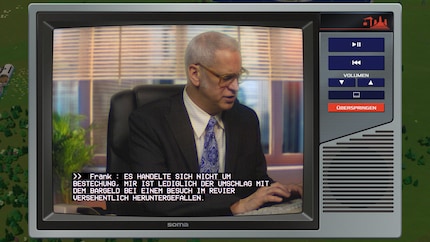
Fortunately, Mr Wilson teaches me I don’t have to manufacture everything myself – I can buy paper from other companies. I already have the right business contacts for that. So, all I have to do is arrange for oil production, build a media production facility with a cassette tape factory, provide loading docks, storage, road access, electricity and water supplies and agree a paper supply contract. Easy, right? Actually, I quickly internalised the process.
That’s it for the tutorial. Wilson leaves me to figure out how to deal with factory fires, striking workers, finding investors and using business contacts.
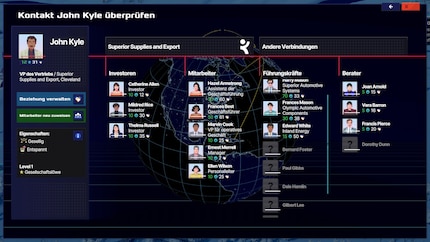
Networking in particular is an important part of the game. I don’t quite understand it yet. I can send my managers to trade fairs and golf courses or ask my contacts if they can introduce me to their contacts. Apparently, I can also fill vacancies in my management team like this – but I’m still not sure how.
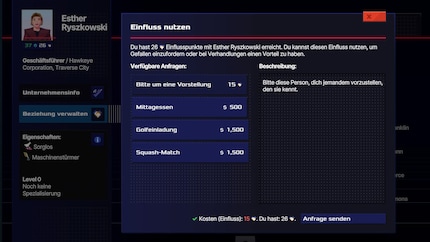
Back to the 80s. With some sound effects – like windows opening and closing or buildings being demolished – the sound designers have clearly exaggerated the retro feel: they remind me of motherboard speaker sounds from half-forgotten gaming days, when computers didn’t have sound cards – and they sound unnecessarily ghastly.
The graphics are simple, but they’re fine for me. There are also day and night and seasonal changes, which provide some variety.
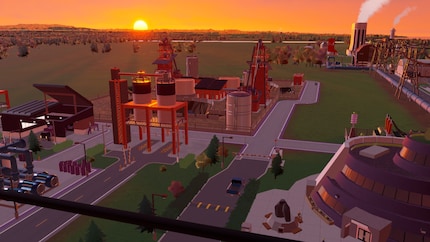
Unlike other business tycoon games, I don’t just drop a ready-made factory in the landscape. I piece it together myself. I designate a large, square area on the map where the new factory will be built. Within this area, I position the office building, the factory halls and everything else related to how the factory runs.
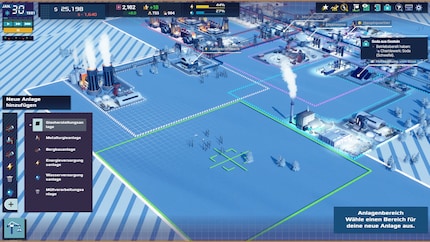
At first, the area seemed far too big. But I slowly realised that the space was actually necessary as production demand grew and I had to plan lorry access carefully to save space. I like the idea – but there isn’t much variety. Every facility I build essentially needs the same components – even if the factory, warehouse and office buildings look different.
I also find it odd that the designated facility area isn’t blocked off from other construction. I can easily build a public road through it. Two facility areas can even overlap – but this reduces the available space and buildings in the overlapping area only work for one of the facilities.
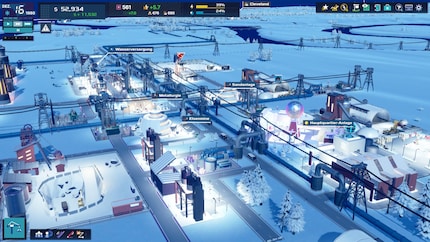
This system offers interesting possibilities for designing my industrial areas, which I can refine with decorative elements. Unfortunately, my industries are out on their own in green fields, disconnected from a city. While there are cities on the maps, they just serve as housing for my workforce – and I also have to pay to build it!
With every new industrial facility, new life is added to my map. Lorries drive along the roads and people and machines move about within the facilities themselves.
In campaign mode, what I produce is predetermined. Sandbox mode is more flexible, but my industry’s still set by the selected map. Currently, there are 15 regions in the US to choose from. I’m more likely to find oil deposits in Texas than in California, where the soil’s good for fruit and alcohol production.
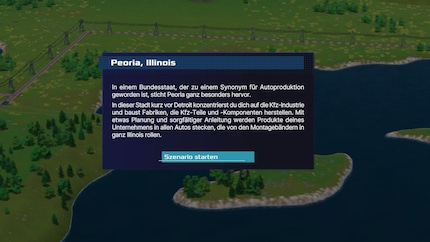
I haven’t yet worked out whether I could also produce wine in a Texas map. If I can’t mine or produce the necessary resources myself, it depends on whether I can find the right business contacts. I don’t know if these are fixed in each region or if I might just meet someone who can sell me bottles.
It’s also helpful that there are multiple manufacturing processes for many products. If my card doesn’t offer crude oil, I can just make plastic from vegetable oil, natural gas or fibres. As well as the large number of end products, Rise of Industry 2 also offers a huge variety of intermediate products – and I can sell all of them if I can find a buyer. So, I don’t have to work through the entire production chain right up to furniture or records – I can also earn money from what’s produced in between.
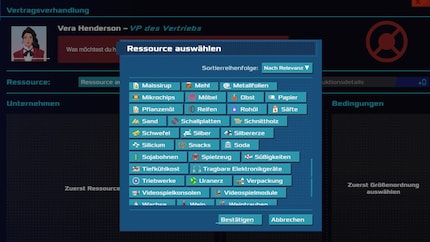
Combined with the ability to buy missing materials, this offers me multiple ways to achieve my goals. I like that.
To buy and sell products – as well as transport them between my factories – I need suitable loading ramps and corresponding storage at the relevant facilities. And that can be complicated.
Different products need different ramps and storage facilities. For wine production, I need grapes, which are stored in a silo as agricultural products. Bottles are considered industrial products which need ramps and storage facilities. The end product – wine – is a food product. To store and sell it, I need a food ramp and storage.
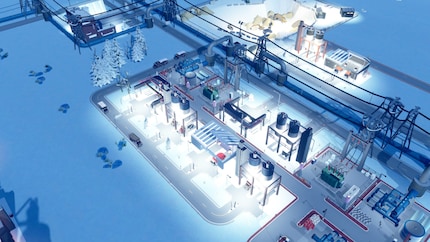
And as if all that weren’t enough, production generates solid, liquid or agricultural by-products that have to be transported away as waste. This means that a single facility needs four different warehouses, access roads, loading ramps and transport lines. If I increase production, a single ramp isn’t enough to deliver or pick up all the products. This means I need more ramps.
There’s also too much realism in the purchase and sales contracts. My factories show me their daily material requirements and their daily output. It’d be great if I could use this figure when agreeing contracts. But I can’t. Instead, I have to agree a purchase of, say, 36 crates every nine days.
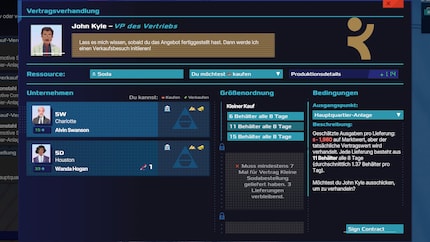
This makes comparing multiple contracts and terms tough because I always have to convert the prices first. By clicking on a quote, I can also find out the daily value, but, unfortunately, it’s not shown clearly. And what do I do if half a box is left in the warehouse every day? It all adds up. I can sign an additional contract for a smaller volume. But – as you can see – it’s a tedious calculation.
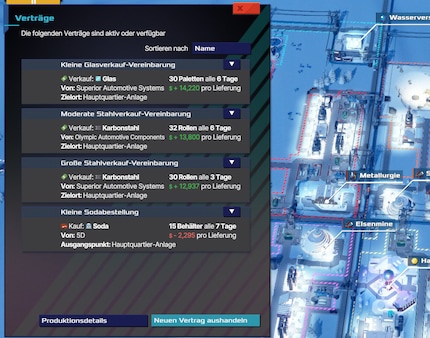
To make matters worse, my suppliers and customers threaten contractual penalties if a delivery doesn’t materialise. Whether I don’t have enough products in stock by the agreed date or my account doesn’t have enough funds to pay for ordered goods, I can expect an unpleasant response. Initially, I can use reputation points to appease my business partner, but eventually, it will cost me money.
It goes without saying that production’s occasionally cancelled due to supply problems, protests or just random events. And, all of a sudden, I can’t fulfil my contract. Another difficulty – but one that’s definitely intentional – is seasonal production. I don’t harvest grapes all year round. Nevertheless, I have to fulfil my wine contract at all times. So, I have to calculate how many cases of wine I will produce throughout the year and plan sales accordingly.
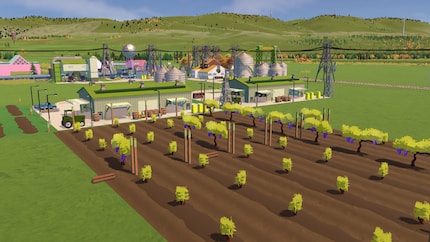
Generally, I like a high level of realism – but games have to be fun, too. Rise of Industry 2 could offer more helpful displays so I can plan more accurately without constantly pulling out the slide rule. The various warehouses and loading ramps are also a bit much. I don’t see why I need a different loading ramp for pallets of bottles than I do for pallets of records.
Unfortunately, the interface doesn’t help me much either. There’s no overlay that shows me the inputs and outputs – or inventory levels in the factories – at a glance. I have to laboriously gather this information by clicking on the individual facilities. Displaying transport routes on the map would also be helpful – ideally, with information about how much of what is being delivered to where. I find that more helpful than a simple list of routes in the overview window.
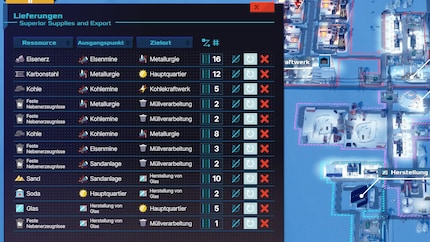
After some time and several attempts, I also found how to extract water, with the information seemingly hidden from my noob eyes. According to the building description, a «small water well» would have been enough to get started. But I couldn’t find it in the build menu. After much searching, I discovered that I needed a «large water well.» So, the manual’s contradictory.
And the water extraction instructions are hidden in the «large water well» section under «wastewater treatment.» I can then use this to build a water supply system with a large well for water extraction. How am I supposed to find this as a new player?
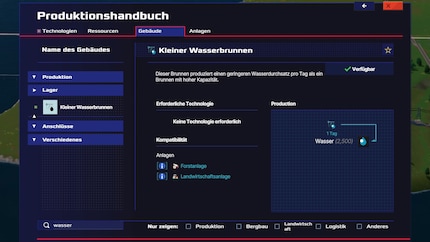
This might also be due to translation errors in the German version. The manual’s informative and helpful for other advice and facilities.
But even loading a save game annoys me. I first have to select the map I’m playing on and click through several windows. This could be a lot easier. Just look at virtually any other game, development team!
Rise of Industry 2 has been available for PC since 3 June. The game was provided to me by Kasedo Games for testing purposes.
People get used to everything, they say. Even complicated gameplay mechanics. However, these initial difficulties shouldn’t obscure the fact that Rise of Industry 2 offers a solid gaming experience. Once I’ve settled in, I can focus on what matters most: building my own industrial empire. Contractual penalties, uneven trading volumes and supply chain difficulties are just part of the deal.
I like the «open» facility areas and their individual layouts, as well as the ability to quickly buy missing intermediate products. So, establishing and maintaining new business relationships is an important part of the game, although I have to teach myself most of it.
I like higher difficulty levels that challenge me, so I’m okay with the contractual penalties. It motivates me to keep an eye on my production. I also have to manage my money carefully to build up a buffer for any potential penalties, but advance planning in this game isn’t easy.
I think it’s a shame I can barely interact with the cities in my region. This was different in Rise of Industry 1. I build my factories purely for export to other companies that aren’t on my map.
Pro
Contra
Feels just as comfortable in front of a gaming PC as she does in a hammock in the garden. Likes the Roman Empire, container ships and science fiction books. Focuses mostly on unearthing news stories about IT and smart products.
Which films, shows, books, games or board games are genuinely great? Recommendations from our personal experience.
Show all